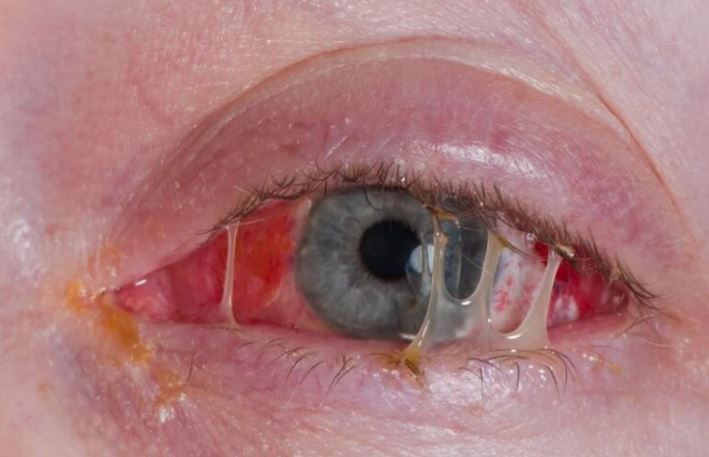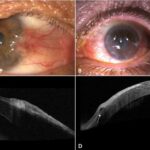What is Acute Hemorrhagic Conjunctivitis?
It is an inflammation of the thin transparent layer (conjunctiva) covering the white part (sclera) of the eye. Acute Hemorrhagic Conjunctivitis, sometimes referred to as ‘Pink Eye’, manifests with conjunctival congestion, vascular dilatation, and the onset of edema.

Background and Epidemiology
Acute Hemorrhagic Conjunctivitis (AHC) was first discovered in Ghana, West Africa in 1969 and since its emergence, has spread to numerous countries including China, India, Egypt, Cuba, Singapore, Taiwan, Japan, Pakistan, Thailand, and the United States. It is sometimes referred to as “Apollo 11 disease” or simply “Apollo” because scientists first discovered it in 1969, the year of the moon landing. In 2006 an epidemic involving over 200,000 individuals was reported in Brazil.
Epidemics of AHC are most common in developing countries. Incidence has been estimated to be as high as one-half of the population in endemic areas. Acute Hemorrhagic Conjunctivitis, found globally in tropical regions irrespective of race or ethnicity, does not exhibit a gender preference. While epidemic hemorrhagic conjunctivitis affects all age groups, it is most prevalent among individuals in their early teens, with children aged 10-14 showing the highest rate.
Recent studies in Changsa, China explored the effectiveness of a quarantine strategy in schools to manage AHC outbreaks. Without intervention, it was projected that almost all students would be infected in 23 days. Employing a susceptive-infective-quarantine removal (SIQR) model, the authors concluded that, quarantine programs could effectively control AHC outbreaks in schools and reduce the overall number of cases in situations where there is lack of a definitive treatment.
Causes of Acute Hemorrhagic Conjunctivitis ‘Apollo’
Viruses, specifically those in the Picornaviridae family, such as enterovirus D70 and coxsackievirus A24, are responsible for AHC. Additionally, adenovirus 11 can also be a causative agent.
Signs and Symptoms of Acute Hemorrhagic Conjunctivitis ‘Apollo’
- Profuse tearing of the eyes and watery (serous) discharges
- Blurring of vision or difficulty seeing
- Pain in the eyes
- Conjunctival redness
- fluid-filled, blister-like growths on top of the eye surface (chemosis)
- Eyelid swelling
- Sensitivity to light (Photophobia)
- Sandy sensation
- Subconjunctival hemorrhages (bleeding from blood vessels below the transparent slimy tissue on the eye surface)
Prevention of Acute Hemorrhagic Conjunctivitis ‘Apollo’

- Avoid touching or rubbing your eyes
- Regular washing of hands with soap and water
- Regular use of hand sanitizers and rubbing alcohol
- Avoid hand shake
- Once infected stay away from school, work place or any social gathering
- Heads of Schools and Agencies should let staff with “apollo” stay away from their work place to limit the spread
- Discard tissues used in cleaning the eyes.
- Avoid using handkerchiefs to clean discharging eyes.
- Avoid sharing towels or personal eye care products like makeups, eye brush, eye drops
Treatment of Acute Hemorrhagic Conjunctivitis ‘Apollo’
While it typically resolves on its own, Doctors may prescribe antibiotic and antiviral eyedrops or ointments to prevent secondary bacterial infections and to limit the severity of inflammatory signs associated with AHC. Seek medical care from your eyecare doctor (optometrist, ophthalmologist) or eyecare nurse (ophthalmic nurse) when infected.
Some Harmful Practices Concerning AHC ‘Apollo’
- Using seawater to treat “Apollo”
- Instilling human breastmilk in the eyes
- Instilling urine in the eyes
- Applying herbal preparation to the eye
- Seeking eyecare from unqualified eyecare practitioners
- Self-medication
- Using eyedrops prescribed for someone




